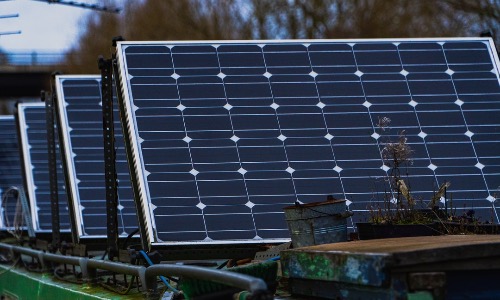We currently live in an apartment in Florida. We pay all utilities which is really just electric, water, and communication. Our temperature is controlled by electricity. Our water is heated through electricity. We have nothing on propane or natural gas.
Fortunately, our power provider tells us how much power we utilize in a month. From that, we can figure out an average per day. When the temperatures start getting cooler and we don’t need A/C all the time, then we can figure out how much power is used just for climate control.
Aside from shutting off the breaker for our water heater and estimating how much we saved from not using it, we can’t really figure out how much power is drawn there.
We do have a lot of electronics plugged in though, more so now that we have a child and things like humidifiers, noise machines, air purifiers, fans and heaters. Lots of little devices, but each one draws power.
There are also computers, TVs, streaming boxes, smart speakers, LED lights, the dishwasher, stove and microwave.
All of that adds up to a lot of power for about 950 square feet. About 31 kilowatts per day actually. Nine hundred a month. That is a lot of power.
Making the Numbers Work for Us
If we want to work with 31kWh a day in Florida, and transfer it to the off grid house up north, we’ll have problems. If we had 6 hours of sunshine a day, which isn’t unreasonable, but neither likely every day, then we’d still need to generate roughly 5kW each of those hours. Assuming some loss, because no solar system is perfectly efficient, we can even assume 25% loss and round up. That would give us 7kW of solar panels.
Checking Amazon, we can find a pallet of thirty 320W, 24v Renogy panels for $9699.99 (#ad). That’s overkill at 9.6kW, but a nice round number. It also works out to about one dollar per watt which just clicks in most people’s heads.
By that math
We are already over $10,000 in debt including taxes and delivery fees. That doesn’t even include batteries, charge controller, wiring, or inverters to run everything off solar power, nor the appliances themselves.
Instead, we need to adjust
Things that can be transferred to other means, need to be transferred. If something can run on propane, it should. Propane is far cheaper than solar panels. If something can run on DC power instead of wasting electricity inverting from DC to AC, then it should be as well.
It is amazing how many devices have built in converters anyway, taking AC power and converting it to DC for the device. If something has a large box on the power cord, it is changing power from AC to DC for the device. If we can get the power straight from the batteries it would be ideal. No loss going back and forth, just have to get it to the right amps and volts for the device.
I’m not sure how complicated that would be right now, but I’m working on the math and shopping for parts.
We also need to figure out what can be done without power. We don’t want to totally isolate, but we do want to live independent of the power grid and have our own power when a winter storm knocks out the rest of the area.
It will take time
It will be awhile before we can figure out how to live off grid and how to save on power demands to make it affordable and worthwhile. I’m not 100% convinced it can ever be done in our case, simply because of laws in the area we are looking. If we can build a smaller structure that is there and not the one we actually live in, maybe that will be best.
